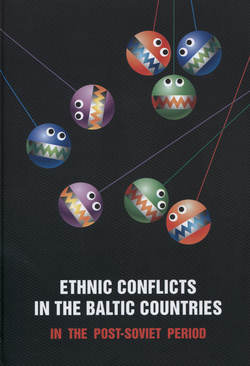Читать книгу Ethnic Conflicts in the Baltic States in Post-soviet Period - Сборник статей - Страница 21
На сайте Литреса книга снята с продажи.
Historical memory in electoral behaviour in Latvia
Andrei Vladimirovich Solopenko, M.Soc.Sc., SKDS, Latvia
Voting behaviour of people in Latvia
ОглавлениеVoting behaviour is a complex of actions of people related to exercising their rights at local and national elections and referendums.
Pursuant to the Latvian law, only citizens of Latvia aged 18 or more at the time of the elections can participate in the elections. Citizens of other EU counties living in Latvia permanently can also participate in the local elections and elections to the European Parliament. However, according to the population census, there are only 5885 such people,[20] which is about 0.3 % of all citizens of Latvia, and this figure is within acceptable statistical error and does not effect the outcome of the elections.
According to the census, citizens of Latvia account for 83.5 %, and 14.2 % are non-citizens of Latvia, which is a separate group of Latvian residents without voting rights and cannot be considered Latvian voters.
Non-citizens of Latvia are mainly Russian-speakers, while 99.9 % of ethnic Latvians are citizens. That is why the distribution by language among the citizens of Latvia is substantially different from that in the country as a whole. Of all the citizens who have specified their language of communication, 72.4 % use Latvian and only 26.9 % Russian language.[21] However, despite that, the results of the elections show what parties are supported by the Russian-speaking and Latvian-speaking citizens (see Fig. 7).
Fig. 7. Partied elected to 11th Parliament.
The map clearly shows that the Concord Centre received majority of the votes in the areas with a large share of Russian-speaking voters. The support of that party in different areas apparently depends on the share of the Russian-speaking voters living there. Where the number of Russian-speaking voters was below 5 %, the party balanced on the verge of 5 % threshold, but where their share was 40 % or more, its support was significantly higher. Correlation coefficient (r) between the share of non-ethnic Latvian citizens in the areas and votes given for the party is 0.976, and the coefficient of determination (R²) is 0.953 (see Fig. 8
20
http://data.csb.gov.lv/DATABASE/tautassk_11/2011.gada%20tautas%20skaitīšanas%20galīgie%20rezultāti/2011.gada%20tautas%20skaitīšanas%20galīgie%20rezultāti.asp Table TSG11-06 (see 11/05/2013)
21
Letter of the Deputy Director of the Central Statistics Office P. Vegis of 13/05/2013.
